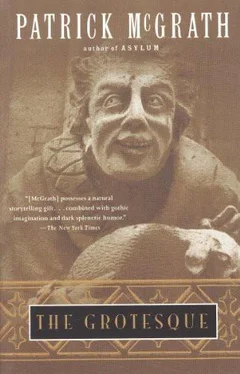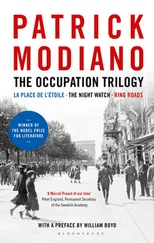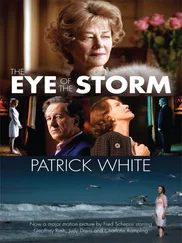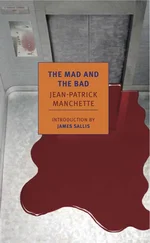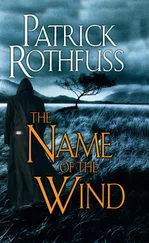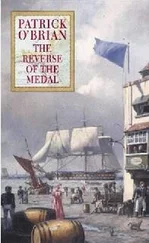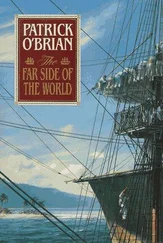You see, I believe that even before he entered the front door of Crook—even before he met me!—Fledge had conceived the ambition to usurp me. I would hazard that there had always been a seed of discontent, a seed of revolt, in his nature, but that only now, comparatively late (for Fledge is not a young man), had he fully resolved to act on it. “Better to reign in hell,” he might have said, like Milton’s Satan, “than to serve in heav’n,” and it’s not hard to see him as a Satan, as a serpent that came slithering into Crook with nothing but evil intentions, though of course it is only by means of the small gestures and fleeting expressions he made that I realize now how intensely, even in those days, he hated me. He had to hate me, you see—I doubt he could have gone through with it otherwise. And this is why, today, he turns my wheelchair to the wall: hating me has become a habit.
It’s a curious thing how glibly complacent we tend to be about the superiority of the mammal. I remarked earlier, apropos of something or other, that the life cycle of the bot-fly was pointless. I didn’t mean it, of course. It would be absurd to suggest that any species has more “point” to it than any other. The natural scientist cannot help, however, developing preferences, and mine lie in the direction of big, predatory, meat-eating creatures—like Phlegmosaurus carbonensis. This is why I bring up the mammal, for it’s often forgotten that the mammal came into his own only after the dinosaur became extinct. When the dinosaur was active the mammal dared not emerge from his hole. He was a timid, hairy little creature —I speak now in layman’s terms—who never mounted any sort of a challenge to the dinosaur’s domination of the Mesozoic environment. The point is, if we keep a close eye on Fledge, we will observe an identical tactic being employed—in this case, calculated opportunism on the part of an innately devious inferior with inflated social aspirations.
I don’t wish to pursue the analogy; suffice it to say that Fledge’s game was a waiting game and, as I say, only by the small signs he made is it now apparent what he was about. One such sign I remember distinctly, for it came, oddly enough, at a moment of, for me, bitter professional disappointment.
♦
The blow fell on one of those lovely crisp, clear mornings we enjoyed last autumn; and it fell, appropriately, in the barn. I had as usual eaten a good breakfast, spent half-an-hour in the lavatory with the Times , and made my way downstairs; and there, on the hall table, I found a letter from the Royal Society. I turned it over in my hands for a few seconds; I was seized with a powerful premonition that the news it contained would be bad. I tucked it into my pocket and crossed the driveway to the barn.
Now the barn, I should tell you, is structurally no different from any other barn in this part of Berkshire. A central area is bounded by four pairs of upright timbers, and it was in this space that I conducted my research. At the north end (the barn stands at right angles to the house, and faces east) a narrow flight of wooden steps leads to a gallery that extends down the west wall and along the south wall and forms a sort of loft I used for storage of bones. Small windows high in the gables permitted a few shafts of daylight to penetrate the gloom, and as I entered, and closed the door behind me, I noticed a small bird, a sparrow, fluttering among the rafters.
I stood for a few moments with my back to the door, without turning on the lights. Structurally, as I say, this was like any other Berkshire barn; functionally it was not. This barn, you see, had been converted into a working research laboratory, and as my eyes adjusted to the obscurity, so did the bony creature on which I had been working for a quarter of a century come dimly into view. It was Phlegmosaurus himself—my reconstruction of the entire skeleton.
He was not tall, as dinosaurs go, a little under seven feet, with a long tail jutting out behind and supported by an iron upright embedded in a block of concrete. Birdlike best approximates the creature, I think, with his huge feet, comprising two long, multiply articulated toes and a third inner toe resembling an oversized claw with a thin, curved, sickle-shaped blade. The hind legs were long, the hipbones broad, and from the pelvic arch the pubis protruded like a sort of giant flat-headed hammer. The barrel-ribbed torso was short, as were the long-fingered forearms, and atop the neck the head of the beast was narrow and pointed and crammed with vicious, fanglike teeth, all set in sockets. I had fixed the jaws wide apart such that he seemed, in his upright, rearing position, to be snarling, roaring even, and when I first brought Victor Horn, my grandson, into the barn to see him, the poor child was frightened half to death! But it was to the hind legs that my eyes were most often drawn in this, the final stage of my research, to the great claw-toes, to the single-hinged ankles, each with a sharp spur of bone projecting from the back like a crocket; to the long shanks, strutted with exquisitely slender fibulae, and to the long stem of femur that fit so snugly into its socket in the hip. Birdlike , I say; those legs looked like the legs of a pheasant, an immense pheasant, a monster of a pheasant, and it was this startling resemblance that had first set me thinking about the dinosaur-bird connection, and the possibility of a kinship far more intimate than orthodox paleontology was then prepared to admit. Distant cousins, orthodox paleontology would consider them. Not me. For me, Phlegmosaurus was the patriarch, and the line of descent was direct. Yes, Phlegmosaurus was the father of the birds—and this of course was the subject of my lecture.
I pressed the switch beside the door. Fluorescent tubes, suspended from the rafters, flickered to life, and my haunted ossuary metamorphosed into the laboratory of a working paleontologist. It was only then that I sat down in the white wicker chair that faced the beast and opened my letter from the Royal Society. The news, indeed, was bad.
♦
At lunch I was silent and morose. “Sykes-Herring,” I said, “has written to me.” There were only the two of us at table, Cleo and Sidney having gone off on bicycles to take rubbings from gravestones near Pock. Harriet had been out in the garden, and the brisk autumn weather had brought a glow to her cheeks. Her hair was gathered and pinned rather higher on her skull than usual, and she was gazing out of the window, giving me her profile, her nose slightly uptipped, her buttonlike chin couched snugly in the warm swell of flesh that had once been her neck. Her brow furrowed as she turned to me. “Now tell me again, dear, which one Sykes-Herring is, I get them all mixed up. Is he the pterodactyl man?”
“No, Harriet,” I said, trying to keep the snappish tone out of my voice. “He’s the Secretary of the Royal Society.”
“Oh yes,” she said. “Rather a sweet little man.”
“Sweet or not,” I said dryly, “he doesn’t want me to give my lecture.”
Harriet was indignant. “Not give your lecture?” she cried. “What, never?”
“He doesn’t say. Apparently he’s having trouble with the scheduling; I am to contact him at my earliest convenience.”
“Well,” said Harriet crossly, “I think that’s perfectly dreadful of him. Now you’ll be impossible all winter.”
I frowned. This was not what I wished to hear, not at all. Impossible indeed! Harriet, I think, realized her gaffe, and nervously touched her hair. A sort of cough came from Fledge. A sudden gust rattled the windowpanes, and was followed by a brisk volley of rain. Harriet turned toward the window again and said, distractedly, “Oh dear, Cleo and Sidney will be quite soaked.” I glanced at Fledge, and I saw it: he was covering his mouth with his hand. He was doing this, I am convinced, not to muffle a cough, but to conceal the fact that he was laughing at me.
Читать дальше
